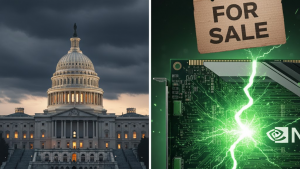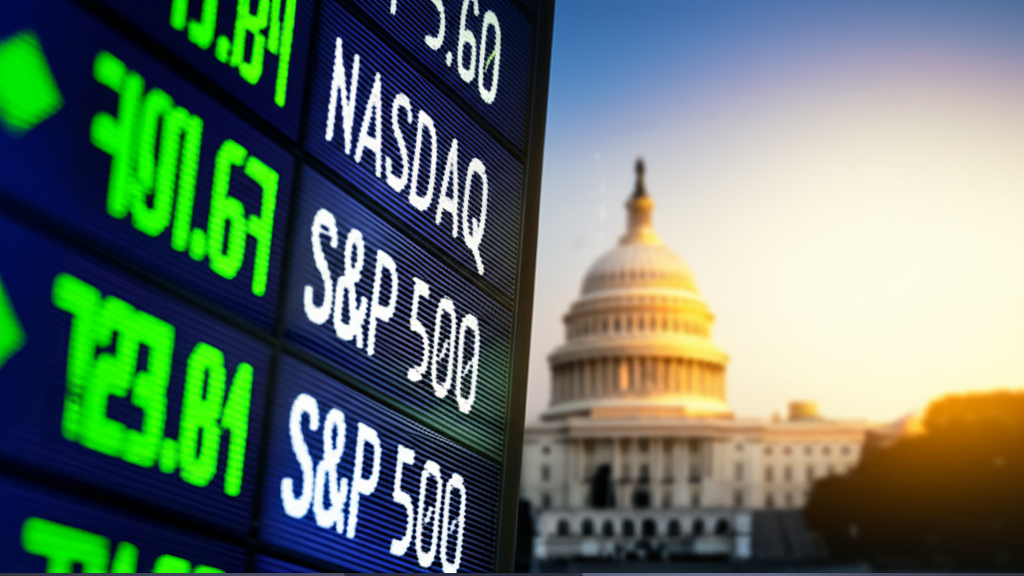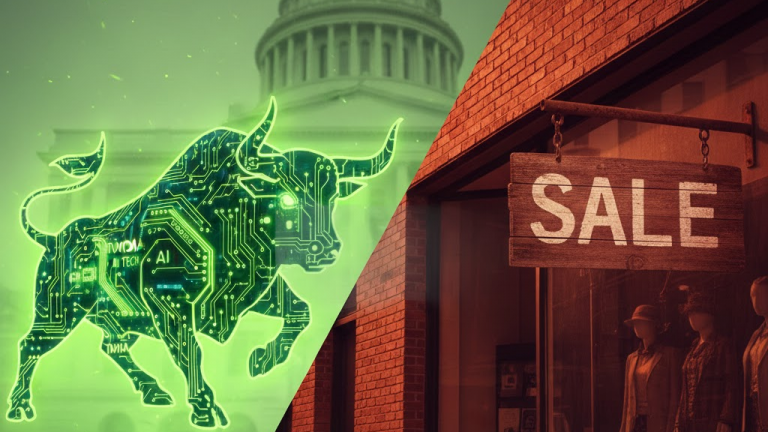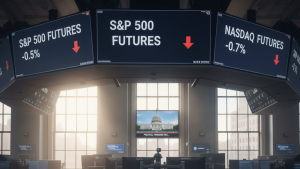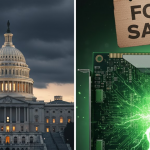Morning Market Snapshot – Novemeber 10, 2025
We are starting the week with a clear risk-on tone. U.S. stock futures are broadly positive, with the tech-heavy Nasdaq-100 leading the way with a 1.0% gain. The S&P 500 and Dow are following, up approximately 0.6% and 0.2%, respectively.
The primary catalyst for this optimism is a significant political breakthrough in Washington. Reports overnight indicate that lawmakers are “edging closer” to a tentative deal that could end the 40-day government shutdown, the longest in U.S. history. This news is providing a wave of relief, removing a major source of market uncertainty that has weighed on sentiment.
However, the ripple effects of the shutdown remain the week’s other big story. Because government agencies have been closed, the release of key economic data, most notably the October CPI (inflation) report, has been delayed. This leaves investors and the Federal Reserve with a lack of critical information, forcing the market to fly partially blind. With no major U.S. data on the calendar, investors will be looking abroad, primarily to a new batch of industrial and retail data from China, for global economic cues.
Pre-Market News Catalysts
Here are the key stocks making early moves and their drivers:
- Nvidia Corporation (NVDA): Up ≈ 3.6 % in pre-market trading as tech/AI names rebounded after last week’s sharp losses.
- Tesla, Inc. (TSLA): Gained about 2.5 % even after recent turbulence as sentiment improved across the tech/EV space.
- Pfizer Inc. (PFE) & Metsera Inc. (MTSR): Metsera sharply down (~15 %) following Pfizer’s acquisition offer worth ~$10 billion; Pfizer up modestly on the deal.
- CoreWeave Inc. (CRWV): Jumped ~4.5 % ahead of Q3 earnings report, illustrating strength in AI/infrastructure names under the improved sentiment umbrella.
The Day’s Debate (The Bull vs. Bear Case)

The Bull Case:
Optimists are pointing to the Senate’s procedural progress on ending the 40-day U.S. government shutdown as a watershed moment that could reignite confidence across risk assets. The return of federal paychecks would inject billions in deferred spending back into the economy over the next two weeks, potentially lifting Q4 consumption figures and offsetting some of the fiscal drag seen through October.
Strategists at JPMorgan and Bank of America noted that the shutdown resolution could restore the flow of key macroeconomic data that traders rely on, especially inflation and employment reports that have been delayed, providing clarity on the Federal Reserve’s policy trajectory. Markets are currently pricing in a roughly 50-basis-point rate cut by March 2026, and clarity around fiscal reopening could make that path smoother.
The surge in big-tech stocks adds to the bullish narrative. Nvidia, Alphabet, and Meta are all recovering from recent drawdowns, as traders rotate back into growth names after weeks of risk aversion. This rotation is being framed as a return to “AI reality”, investors betting that earnings and innovation will outpace short-term valuation concerns.
Finally, energy markets are reinforcing the optimism: crude prices rose above $80 a barrel, supported by expectations of higher demand once federal operations normalize. Oil’s rise is being interpreted as a sign of macro stabilization, not renewed inflation.

The Bear Case:
Skeptics warn that the current rally could be a “sugar high.” Although a procedural vote has passed, the final approval and presidential signature are still pending. That lingering uncertainty, paired with the long-term economic scarring from a 40-day government shutdown, the longest in modern U.S. history, means that business confidence and hiring momentum may take longer to recover.
Bond markets continue to flash caution: yields on 10-year Treasuries ticked higher overnight, but not because of optimism, instead, traders are demanding more compensation for holding U.S. debt amid fiscal dysfunction. Rising yields tend to compress equity valuations, especially in rate-sensitive tech. Moreover, corporate insiders have resumed net selling of large-cap tech shares, suggesting limited conviction behind the rebound.
Inflation remains another underappreciated headwind. With oil and wage pressures still elevated, the Fed could hesitate to deliver cuts early next year. If the market is overestimating the pace of policy easing, the resulting repricing could quickly unwind recent gains. As one strategist put it in Bloomberg’s overnight wrap, “This is a rally built on relief, not on re-acceleration.”
In short, while the bulls see this as the start of a new leg higher, bears believe the market is running ahead of fundamentals and could soon face a cold dose of macroeconomic reality.
The Strategic Takeaway
The key takeaway for traders and investors is that this is primarily a relief rally, not a full-blown new growth explosion. The removal (or mitigation) of a major overhang, the government shutdown, is bullish in its own right, but does not automatically resolve inflation pressures, earnings disappointments, or high valuations. The upcoming flow of economic and earnings data will determine whether this move has legs or whether it stalls once near-term optimism fades.
Upcoming Session Outlook with Directional Bias
Expect a slightly bullish open: the tone is improving on the shutdown news, technology is catching a bid, and risk assets are generally moving higher. However, the broader bias remains cautious until clearer evidence emerges on growth, inflation, and earnings.
Disclaimer: This article is for informational purposes only and does not constitute financial, investment, or legal advice. The information provided is a synthesis of publicly available data and expert analysis and should not be considered a recommendation to buy or sell any security. Investing in the stock market involves risk, including the possible loss of principal. Past performance is not indicative of future results. Readers should consult with a qualified financial advisor to determine an investment strategy that is suitable for their own personal financial situation and risk tolerance.
Sources





